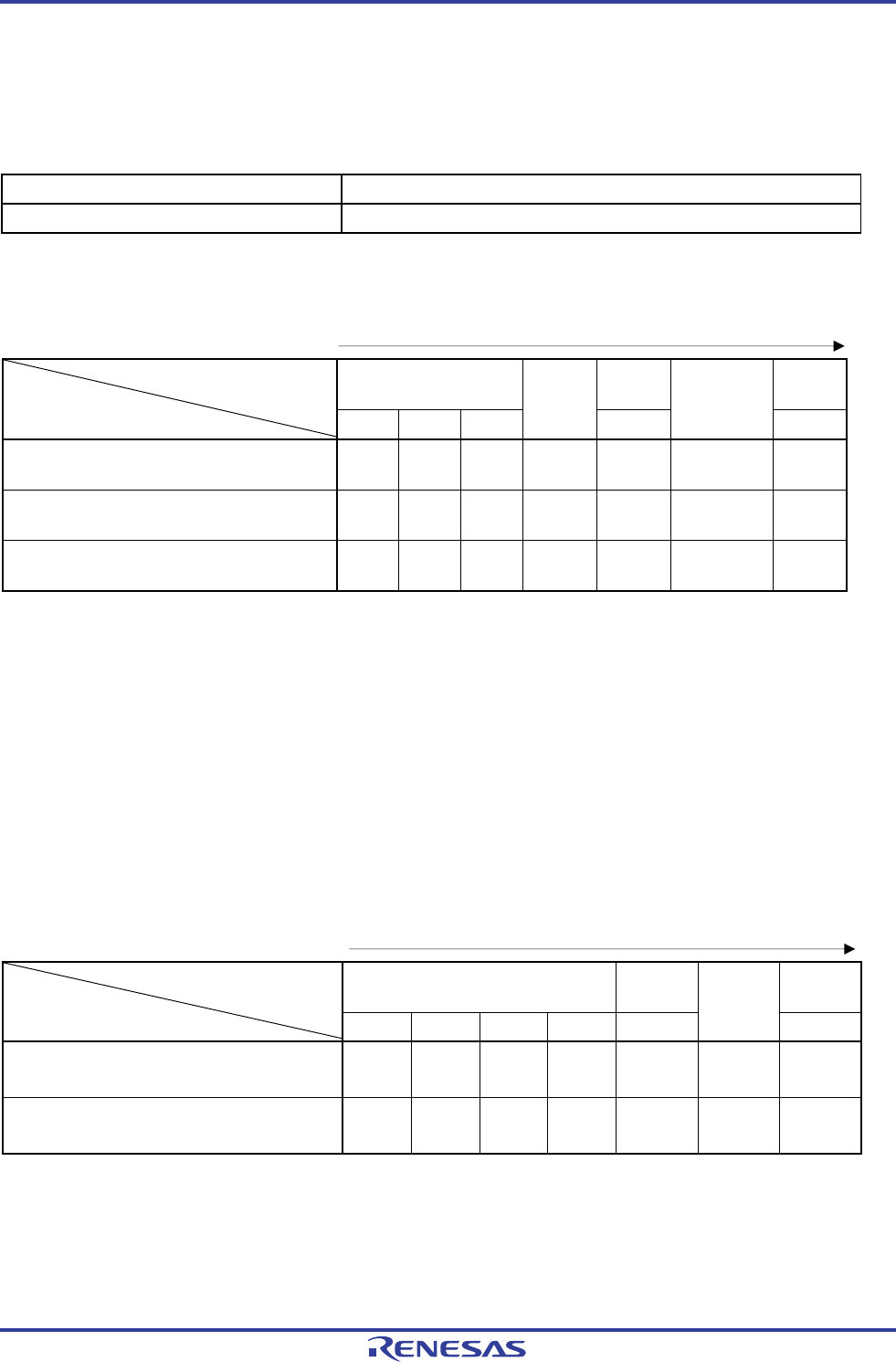
RL78/G1A CHAPTER 5 CLOCK GENERATOR
R01UH0305EJ0200 Rev.2.00 169
Jul 04, 2013
Table 5-3 shows transition of the CPU clock and examples of setting the SFR registers.
Table 5-3. CPU Clock Transition and SFR Register Setting Examples (1/5)
(1) CPU operating with high-speed on-chip oscillator clock (B) after reset release (A)
Status Transition SFR Register Setting
(A) → (B) SFR registers do not have to be set (default status after reset release).
(2) CPU operating with high-speed system clock (C) after reset release (A)
(The CPU operates with the high-speed on-chip oscillator clock immediately after a reset release (B).)
(Setting sequence of SFR registers)
CMC Register
Note
CSC
Register
CKC
Register
Setting Flag of SFR Register
Status Transition
EXCLK OSCSEL AMPH
OSTS
Register
MSTOP
OSTC Register
MCM0
(A) → (B) → (C)
(X1 clock: 1 MHz ≤ f
X ≤ 10 MHz)
0 1 0 Note 2 0
Must be
checked
1
(A) → (B) → (C)
(X1 clock: 10 MHz < f
X ≤ 20 MHz)
0 1 1 Note 2 0
Must be
checked
1
(A) → (B) → (C)
(external main clock)
1 1
×
Note 2 0
Must not be
checked
1
Notes 1. The clock operation mode control register (CMC) can be written only once by an 8-bit memory
manipulation instruction after reset release.
2. Set the oscillation stabilization time as follows.
• Desired the oscillation stabilization time counter status register (OSTC) oscillation stabilization time ≤
Oscillation stabilization time set by the oscillation stabilization time select register (OSTS)
Caution Set the clock after the supply voltage has reached the operable voltage of the clock to be set (see
CHAPTER 29 ELECTRICAL SPECIFICATIONS (T
A = −40 to +85°C), CHAPTER 30 ELECTRICAL
SPECIFICATIONS (G: INDUSTRIAL APPLICATIONS TA = −40 to + 105°C).
(3) CPU operating with subsystem clock (D) after reset release (A)
(The CPU operates with the high-speed on-chip oscillator clock immediately after a reset release (B).)
(Setting sequence of SFR registers)
CMC Register
Note
CSC
Register
CKC
Register
Setting Flag of SFR Register
Status Transition
EXCLKS OSCSELS
AMPHS1 AMPHS0 XTSTOP
Waiting for
Oscillation
Stabilization
CSS
(A) → (B) → (D)
(XT1 clock)
0 1 0/1 0/1 0 Necessary 1
(A) → (B) → (D)
(external sub clock)
1 1
× ×
0 Necessary 1
Note The clock operation mode control register (CMC) can be written only once by an 8-bit memory manipulation
instruction after reset release.
Remarks 1. ×: don’t care
2. (A) to (J) in Table 5-3 correspond to (A) to (J) in Figure 5-15.


















